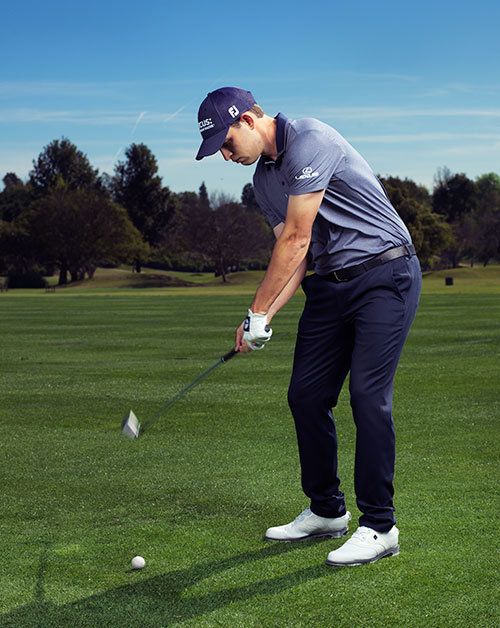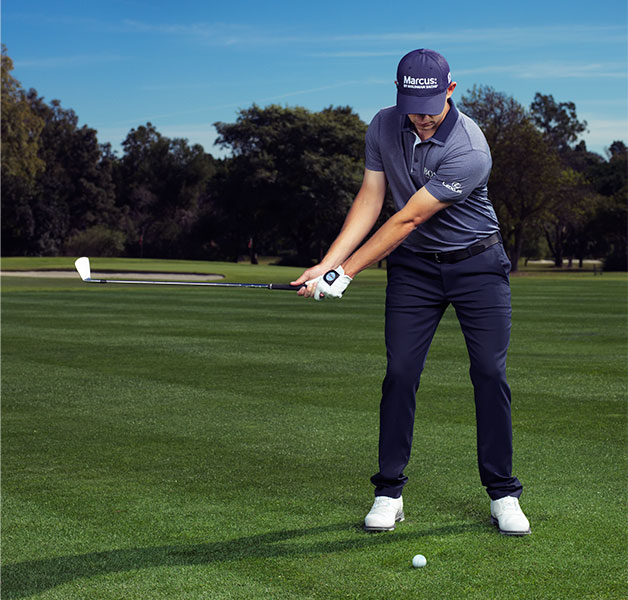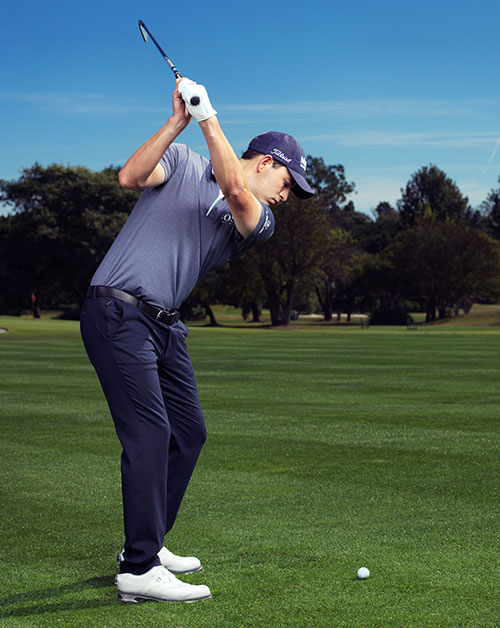Improve your ball-striking with these four moves.
You might not believe this because I don’t smile very much on the golf course, but the truth is, I love this game. I really enjoy myself out there. Specifically, I love the process of improving and becoming a better ball-striker. Understanding the work you need to do to get better, understanding your body to give you more control and power, understanding the swing in a way that makes it simpler – all of that is interesting to me.
Because I enjoy the intensity of this game and the process of getting better every day, I can’t imagine doing anything else. I’ve been like that from the beginning – even when I was 7 years old and sitting on the range at Virginia Country Club, bugging tour pros like John Cook, Paul Goydos and John Mallinger about how they played. I consumed every bit of what they said. Same goes for their teacher and mine, Jamie Mulligan. He says my game is a hybrid of all the players he has worked with and been connected to, tracing back to Ken Venturi, Byron Nelson and Ben Hogan. I don’t know about that, but I do think all great players are energised by the search to simplify their swings so impact is more powerful and consistent.
I don’t get bogged down in the technical parts of my swing all the time – that’s what a teacher like Jamie is for – and I think that’s the right thing for you, too. Good ball-striking is a result of making your swing simpler. To help with that, Jamie has broken down mine into four key parts, and I’m going to show you the language we use to make my move more efficient, more intuitive and more repeatable. I had to make my swing better and smarter to compete again after a fracture in my back kept me on the sideline for three years. But that process led me to crack the top 10 in the World Golf Ranking and the top 20 in 50 ball-striking categories on the PGA Tour in 2019.
I hope what I work on brings about a simple, cohesive and consistent swing that you can rely on, too, so you can enjoy your game as much as I’m enjoying mine.
– with Mike Stachura
1. Takeaway? No, “moveaway”
When I take my address position, you’ll see my feet moving, my head turning, my arms and shoulders adjusting. That’s not nerves. It’s about getting ready to make an athletic move free of tension. Instead of thinking about the first move in the swing being the takeaway, which sounds like you’re grabbing the club and pulling it away from the ball, I prefer what Jamie calls it – the “moveaway”. My body turn is what moves the club back [above], so there’s no excess activity in my hands or wrists to get the club in the proper position. I want a big swing arc. I have naturally long arms that could give me width and extension to start the backswing, but I want the proper position of my hands and arms to be the result of the way I’ve rotated my upper body. My left arm’s relationship to my body doesn’t change, and you’ll later see how that position is nearly mirrored as the club moves past impact into the follow-through.
2. Hang the laundry at the top
To make my swing more efficient since the back injury, we focus on continuing to make a big turn. The width created during the moveaway phase is still there at the top. The way we see it, getting to the top isn’t merely a position, there’s a purpose to it. It’s about getting the club loaded for the downswing.
If I continue to pivot and rotate my upper body, then the club naturally gets to the right position without any extra work from my arms. The more I get my shoulders turned, the less violent the transition into the downswing will be – which is key to remaining in control of the club. A big turn also gathers power and loads it up to be used late in the downswing, right where you want it. There’s no tension in my arms, the club isn’t loose or disconnected, and there’s no overswing. The position you see here [right] is what Jamie calls “hanging laundry”. When I get to the top of the backswing, the club is steady enough to hang laundry off the hosel.
 3. Get out of the way
3. Get out of the way
When Jamie and I are working on my swing, we don’t talk a lot about positions and techniques. He might talk about surfing, and I might talk about the Lakers, but we’re not going back and forth about the kinematic sequence, rotational velocity or the X-Factor. We both know the part of the swing that tells us everything is this moment you see here [right]. In fact, this specific viewpoint is where Jamie often will watch me hit balls. And this is when he’ll occasionally say this sentence that might not make sense until you really think about it: get out of the way while you’re in it. It’s his way of explaining how my hips and lower body should clear out of the way of the club’s path on the downswing while the upper body, particularly the left shoulder, stays in the shot – meaning still facing the ball. This relationship between the lower body and upper body is crucial to ball-striking. If everything rotated open together, and you’ve thrown open your left shoulder, you’re no longer in a good position to flush it. What Jamie wants to see is that my left arm has naturally extended like it’s inside a tube with the shaft of the golf club, and that my lower body created room to accelerate that tube into the ball.
 4. Release and Catch the club
4. Release and Catch the club
As strange as this might sound, I don’t want to hit the ball. Sure, I like compressing it off a tight lie, but I don’t want the sense of getting the club to the ball with an intentional hitting motion. The club should be accelerating into impact and through to the finish in an almost freewheeling way, so it feels like I’m just releasing the handle and then catching it on the follow-through [below]. You can see how the position of my arms in relation to my body just after impact is similar to before impact [right and above] – and a lot like where I was in the moveaway. I’ve simply allowed everything – lower body, hips, upper body and arms – to naturally unwind. Jamie likes to say impact is not a destination, it’s a journey. When I get to the finish, I want to feel tension-free, supported and relaxed. Like with all these positions, I’m not trying to put the club in a particular place. The club arrives at the finish as a result of the natural turning and unwinding of my body. That’s just like what’s been happening with my game overall. Whether it’s shooting low scores or winning a tournament or just hitting the ball solidly, the results are the byproduct of the process. If you want to put on a clinic, give this concept a shot.






